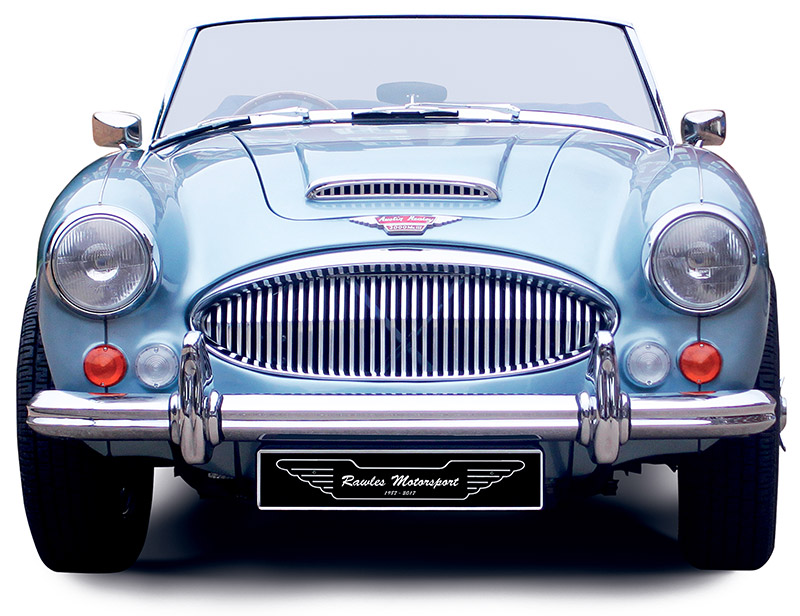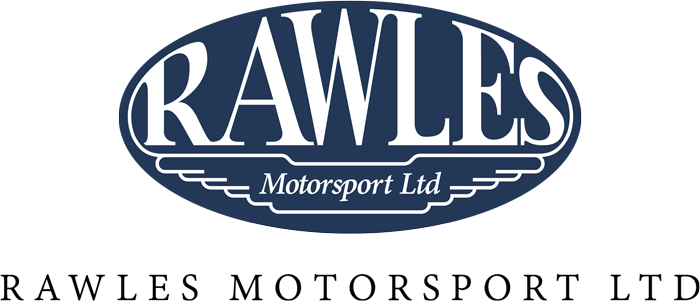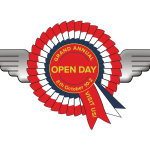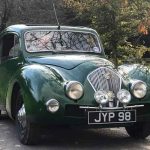Austin Healey Buyer’s Guide & Model Overview (BN1-BJ8)
Which Healey Do You Want?
We’ve put together the following buyer’s guide to give you everything you need to know to understand all the different Austin Healey models built from 1953 until the end of 1967.
So please browse through every Healey ever made and decide your favourite! In the galleries we have highlighted visual changes. Or if you need more help, book a visit to our showroom and we can show you all the models in the flesh.
Which Healey Do You Want?
We’ve put together the following buyer’s guide to give you everything you need to know to understand all the different Austin Healey models built from 1953 until the end of 1967 plus a few specials in-between.
So please browse through every Healey ever made and decide your favourite! In the galleries we have highlighted visual changes. Or if you need more help, book a visit to our showroom and we can show you all the models in the flesh.
Austin Healey 100 (1953-1956)
Named 100 for 100HP and over 100MPH (colloquially named 100/4s) these two-seat Healeys are powered by a torquey 2660cc 4-cylinder. Regarded as the purest in terms of design and feel with a low kerb weight. A drop-down windscreen is among iconic features. 1953-55 BN1 cars utilise a 3-speed gearbox with overdrive on second and third – not something to be put off by with a final drive ratio identical to BN2 cars. Many even prefer BN1s as until July 1954 they were 80kg lighter due to an aluminium boot, bonnet and lighter rear axle.
In 1955-56 BN2 cars were released with a 4-speed gearbox with no synchro on first. The front and rear wings changed slightly to accommodate the newly offered two-tone paint combinations. However the first two-tone Healey was SAC 884 – a Blue/White BN1.
Austin Healey 100 (1953-1956)
Named 100 for 100HP and over 100MPH (although colloquially referred to as 100/4s) these two-seat Healeys are powered by a torquey 2660cc 4-cylinder. Regarded as the purest in terms of design and feel, Austin Healey 100s are light on their feet and feature a drop-down windscreen for top speed.
1953-55 BN1 cars utilise a 3-speed gearbox with overdrive on second and third – not something to be put off by with a final drive ratio identical to BN2 cars. Many may even prefer BN1s as up to July 1954 they were 80kg lighter due to an aluminium boot, bonnet and lighter rear axle.
In 1955-56 BN2 cars were released with a 4-speed gearbox with no synchro on first. The front and rear wings changed slightly to accommodate the newly offered two-tone paint combinations. The first two-tone Healey ever was SAC 884 however, a Blue/White BN1.
Austin Healey 100S (1955)
Truly the Austin Healey race car for the road and radically different from any production Healey, the 100S cars were replicas of a modified 100 driven by Lance Macklin in 1954 that averaged 132.29 MPH over 24 hours with a mean speed of 143.1 MPH.
Based on the same basic chassis of the 100 but lighter and stronger with an aluminium body, complete with a new grille design omitting bumpers and adding an aero windscreen. The 100S cars featured a drivetrain redesign with a new alloy head and special gear ratios boosting power over even a 100M. Handling was improved with new dampers, stiffer anti-roll bars and a revolutionary (in 1955) all-round disc Dunlop braking system.
Austin Healey 100S (1955)
Truly the Austin Healey race car for the road and radically different from any production Healey, the 100S cars were replicas of a modified 100 driven by Lance Macklin in 1954 that averaged 132.29 MPH over 24 hours with a mean speed of 143.1 MPH.
Based on the same basic chassis of the 100 but lighter and stronger with an aluminium body, complete with a new grille design omitting bumpers and adding an aero windscreen.
The 100S cars featured a drivetrain redesign with a new alloy head and special gear ratios boosting power over even a 100M. Handling was improved with new dampers, stiffer anti-roll bars and a revolutionary (in 1955) all-round disc Dunlop braking system.
Austin Healey 100M (1955-56)
With just 640 models made, 100M cars are valuable collector items based on the BN2 models. These are perhaps one of the sweetest driving Healeys made, explaining why many upgrade their cars to this specification with us. 100M cars feature a new louvred bonnet design plus leather strap (a Le Mans regulation as displayed on the team race cars), a heavily revised engine with new pistons, camshaft, distributor, carburettors and the very famous cold airbox.
Verification of these cars as original is very important and we strongly advise you ask us to inspect any car claiming to be a 100M or 100 Le Mans.
Austin Healey 100M (1955-56)
With just 640 models made, 100M cars are valuable collector items based on the BN2 models. These are perhaps one of the sweetest driving Healeys made, explaining why many upgrade their cars to this specification with us. 100M cars feature a new louvred bonnet design plus leather strap (a Le Mans regulation as displayed on the team race cars), a heavily revised engine with new pistons, camshaft, distributor, carburettors and the very famous cold airbox.
Verification of these cars as original is very important and we strongly advise you ask us to inspect any car claiming to be a 100M or 100 Le Mans.
'Le Mans' and 'Le Mans Modified' Austin Healey 100
Donald Healey’s own dealership/ the Donald Healey Motor Co. offered kits (codenamed P280) so that any Healey 100 BN1 or BN2 could be retrofitted with the Le Mans modification or 100M parts.
It is understood around 500 of these were made and the cars would have to be shipped back to the Donald Healey Motor Co for conversion. If buying a Le Mans car we strongly advise you ask us to inspect the car as many cars are upgraded to this format and claim to be one of these cars. Cars upgrade in present day – a great mod to increase power and torque, plus value – should be referred to as ‘Le Mans modified’.
'Le Mans' and 'Le Mans Modified' Austin Healey 100 (1953-1956)
Donald Healey’s own dealership/ the Donald Healey Motor Co. offered kits (codenamed P280) so that any Healey 100 BN1 or BN2 could be retrofitted with the Le Mans modification or 100M parts.
It is understood around 500 of these were made and the cars would have to be shipped back to the Donald Healey Motor Co for conversion. If buying a Le Mans car we strongly advise you ask us to inspect the car as many cars are upgraded to this format and claim to be one of these cars. Cars upgrade in present day – a great mod to increase power and torque, plus value – should be referred to as ‘Le Mans modified’.
Austin Healey 100/6 (1956-1959)
For the 100-Six, Austin made some major changes to the Healey sportscar design. The introduction of the new ‘C’ series 6-cylinder engine was a major leap in terms of refining the beast. Gearbox layout was similar but an all new chassis and bodywork design allowed for the first time a 2+2 layout (chassis designation BN4) as well as a 2-seater (BN6). A totally different grille design was now employed in the shape of an oval over the diamond variant on the 100. Most but not all cars feature the iconic creased bonnet.
There is a difference in early (Longbridge built) and late (Abingdon built, c. November 1957 onwards) models. Later models received an engine update another 15bhp. 100/6 cars remain great value over the pricier 3000.
Austin Healey 100/6 (1956-1959)
Debuting in 1956 the Austin Healey 100-Six, Austin made some major changes to the Healey sportscar design. The introduction of the new ‘C’ series 2639cc 6-cylinder engine was a major leap introducing a creamy smooth soundtrack and a greater thirst for revs and horsepower. Gearbox layout was similar but an all new chassis and bodywork design allowed for the first time a 2+2 layout (chassis designation BN4) as well as a 2-seater (BN6). A totally different grille design was now employed in the shape of an oval over the diamond variant on the 100. Most but not all cars feature the iconic creased bonnet.
There is a difference in early (Longbridge built) and late (Abingdon built, c. November 1957 onwards) models. Later models received a big engine upgrade with new pistons and a new head, giving another 15bhp. 100/6 cars remain great value over the pricier 3000.
Austin Healey 100/6S (1957-8)
Visually identical to a 100/6, the 100/6S cars were produced with 4-wheel disc brakes similar to those on the 100S cars. Some speculate that this was due to a minimum order from Dunlop for the 100S but also for race homologation. All examples had the later revised 100/6 engine.
These cars were sold exclusively as RHD cars from the Donald Healey Motor Co dealership in late 1957, for a special price.
Austin Healey 100/6S (1957-1958)
Visually identical to a 100/6, the 100/6S cars were produced with 4-wheel disc brakes similar to those on the 100S cars. Some speculate that this was due to a minimum order from Dunlop for the 100S but also for race homologation. All examples had the later revised 100/6 engine.
These cars were sold exclusively as RHD cars from the Donald Healey Motor Co dealership in late 1957, for a special price.
Austin Healey 3000 MkI (1959-1961)
The introduction of the 3000 brought forth many changes to the Healey platform. Although the same basic chassis as the 100/6 the engine was now of almost 3 litre capacity, hence the new name. This made for a great increase in power and torque which was supported with an upgrade of front discs to the braking system over the drums of 100 and 100/6 cars. Available in both 2+2 (BT7) and rare two-seat roadster (BN7) body styles. Two seater cars drive very differently and were the platform on which the works based their race cars and are of greater value.
It is possible to upgrade any 3000 to MkIII performance or more very easily.
Austin Healey 3000 MkI (1959-1961)
The introduction of the 3000 brought forth many changes to the Healey platform. Although the same basic chassis as the 100/6 the engine was now of almost 3 litre capacity, hence the new name. This made for a great increase in power and torque which was supported with an upgrade of front discs to the braking system over the drums of 100 and 100/6 cars. Available in both 2+2 (BT7) and rare two-seat roadster (BN7) body styles. Two seater cars drive very differently and were the platform on which the works based their race cars and are of greater value.
It is possible to upgrade any 3000 to MkIII performance or more very easily.
Austin Healey 3000 MkII (1961-1962)
The MkII Austin Healey debuted a new grille design, moving from the wavy horizontal style of the MkI to vertical straight bars, giving the front end a new and purposeful look. Part way through production of these cars the new centre-change gearbox was unveiled giving cars a much sportier drive. All MkII cars now featured a triple-carburettor setup which improved low end torque.
Produced in 2+2 (BT7) with a (now ultra-rare) 2-seater format (BN7) of which just 355 were produced making these collector items as well as one of the finest driving cars. Original right hand drive two-seaters are exceedingly rare and valuable.
Austin Healey 3000 MkII (1961-1962)
The MkII Austin Healey debuted a new grille design, moving from the wavy horizontal style of the MkI to vertical straight bars, giving the front end a new and purposeful look. Part way through production of these cars the new centre-change gearbox was unveiled giving cars a much sportier drive. All MkII cars now featured a triple-carburettor setup which improved low end torque. This setup was introduced as running a third competitor allowed similar use of three webber carburettors on Healeys rally cars, greatly increasing speed.
Produced in 2+2 (BT7) with a now ultra-rare 2-seater format (BN7) of which just 355 were produced making these collector items as well as one of the finest driving cars. Original right hand drive two-seaters are exceedingly rare and valuable.
Austin Healey 3000 MkIIA (1962-1963)
The MKIIA or BJ7 model Healey marked a huge leap in refinement for the Austin Healey. These cars debuted a new body style with wind-up windows and a easy-up pram style hood. You can reach over and put up the roof quickly at a set of lights in these cars. Now back to a more fuel-efficient yet larger twin-carb setup power remained the same.
The MkIIA is certainly a sweet spot in the Healey line-up where you could retain the more delicate styling of early cars (including the early and more minimal interior) but with late car refinements in a package much rarer than a MkIII.
Austin Healey 3000 MkIIA (1962-1963)
The MKIIA or BJ7 model Healey marked a huge leap in refinement for the Austin Healey. These cars debuted a new body style with wind-up windows and a easy-up pram style hood. You can reach over and put up the roof quickly at a set of lights in these cars. Now back to a more fuel-efficient yet larger twin-carb setup power remained the same.
The MkIIA is certainly a sweet spot in the Healey line-up where you could retain the more delicate styling of early cars (including the early and more minimal interior) but with late car refinements in a package much rarer than a MkIII.
Austin Healey 3000 MkIII (1963-1967)
The MkIII represented yet another leap for the Austin Healey platform. With a 150 BHP engine the cars had a claimed top speed of 125MPH and featured a new ‘De-Luxe’ interior with a wooden dash, centre console and fold down rear shelf for luggage. The MkIII started with a short production run of Phase I cars which have a body and chassis much like the MkIIA but Phase II cars introduced a new chassis design for extra ground clearance as well as a revised and more sophisticated rear suspension as well as changes to the bodywork which gave the car further road presence. There is no such thing as a Phase III but many changes took place (like with all Healey variants), in late ’64 twin indicators were introduced and the cars moved closer to what we call final production specification where the cars were in their most refined format.
Austin Healey 3000 MkIII (1963-1967)
The MkIII represented yet another leap for the Austin Healey platform. With a 150 BHP engine the cars had a claimed top speed of 125MPH and featured a new ‘De-Luxe’ interior with a wooden dash, centre console and fold down rear shelf for luggage. The MkIII started with a short production run of Phase I cars which have a body and chassis much like the MkIIA but Phase II cars introduced a new chassis design for extra ground clearance as well as a revised and more sophisticated rear suspension as well as changes to the bodywork which gave the car further road presence. There is no such thing as a Phase III but many changes took place (like with all Healey variants), in late ’64 twin indicators were introduced and the cars moved closer to what we call final production specification where the cars were in their most refined format.
Potential Issues and Things to Look For
All Rawles Motorsport Ltd sales Austin Healeys undergo a 100-point inspection and are provided serviced and with MOT. Our aim is to provide cars ready to enjoy. If you’re looking elsewhere its best to check the following, or ask for us to undertake one of our detailed Austin Healy pre-purchase inspections:
- Healeys are now MOT exempt but we strongly recommend them as a further check for personal safety (and at £40 or so well worth doing)
- Rust
- Paint blemishes can be costly especially on metallics
- Numerous grease points in suspension need attention
- Dampers wear very quickly leading to shaking and poor handling
- Worm and peg design in steering wears easily and is complex to service
- Aluminium shrouds and steel wings placed next to each other corrode with electrolysis if not protected properly which can be hidden
- Accident damage can be hidden across chassis and bulkheads
- Ensure the overdrive operates quickly and efficiently
- Gearbox should not pop out of gear and should allow for smooth quiet changes
- Watch out for poorly fitting aftermarket parts affecting performance and reliability
- Rear axles can leak onto brakes so servicing is important
- Old wire wheels can be weak so it is good to check their integrity and for loose spokes

Are Upgrades and Modifications a Good Idea?
The market is changing and there are more and more Austin Healey buyers who want to use their Healeys on long trips or vacations. As such, upgrades and modernisations to make this easier are very popular. But there are some things to watch out for:
Positive and Value Adding Upgrades for Austin Healeys:
-
- Engine Upgrades for Performance and Reliability
- Upgrading a 100 to 100M specification is very popular & adds value
- Gearbox upgrades such as our modern 5-speed where the original unit is kept with the car
- Suspension and brake upgrades to improve refinement (we offer these) and are extremely popular with customers used to performance cars
- Hidden chassis strengthening where done invisibly and subtly like (such as our restorations)
- Full leather interiors over factory vinyl
- Sound deadening and thermal insulation in cockpit to reduce heat and noise
- LED headlights that are of authentic look
- Upgraded oil seals
Negative Upgrades for Austin Healeys:
-
- Engine swaps (i.e. American V8s) are heavily frowned upon and drastically affect value
- Body modifications that are irreversible or not period
- Turbocharging or supercharging
- Alloy wheels
- Fibreglass body panels (especially shrouds)
- Wide arch kits





